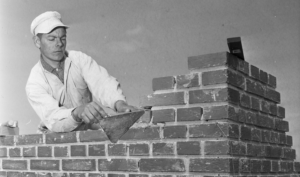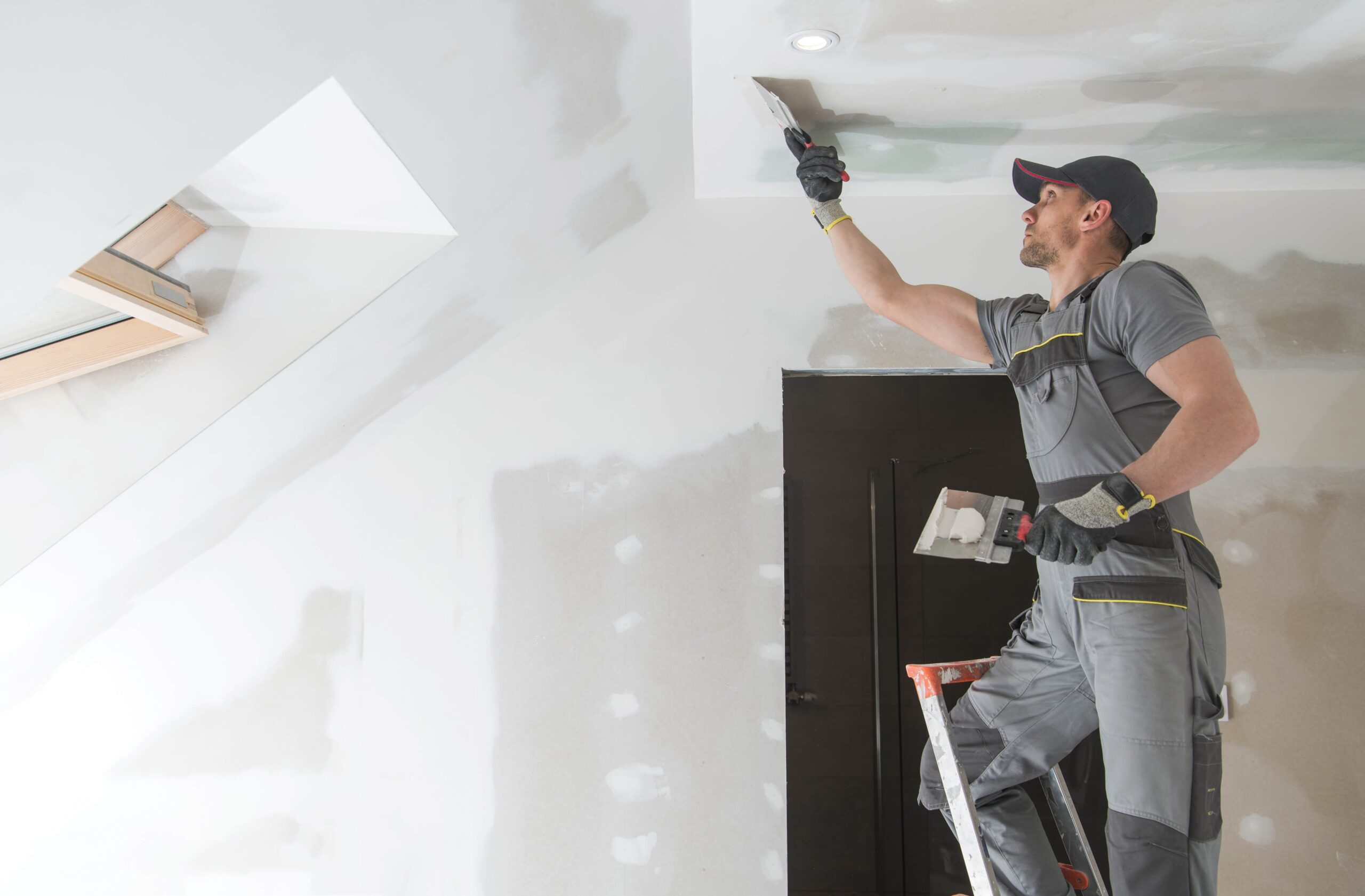A well-maintained roof is a vital part of your house. But even the most durable shingles and tiles aren’t infallible, and it’s not uncommon for high winds or falling debris to damage them.

The first step in repairing a leaky roof is to examine it carefully. This requires accessing the attic or crawl space, and removing cedar, Hardi-plank, or vinyl siding as needed to get to the flashing. Visit https://www.roofingkalispellmt.com/ for more information.
Roofing specialists are equipped with the right tools and materials to complete the repairs as efficiently as possible. This is a huge benefit as it allows them to finish the job in a shorter time span than do-it-yourselfers can. The roof repair specialist also has the safety gear and niche expertise needed to avoid accidents on the job, which means you get to rest easy knowing that your home is in good hands.
Whether it’s a moss infestation, cracking tiles or leaking gutters, a professional can address these issues before they worsen. This is especially important as a damaged roof can lead to serious structural problems down the road. Think of it as a small dent in your windshield: if left unattended, that dent could swell into a crack that needs to be replaced with a new windshield.
Additionally, a well-maintained roof is an excellent energy-saving tool. Leaks and other problems allow conditioned air to escape and outside air to infiltrate, which increases your energy consumption. By addressing these issues promptly, you can lower your utility bills and help the environment by decreasing energy waste.
Avoiding Mistakes
Your roof is an essential aspect of your home that protects you and everything underneath it. But, like any component of your house, it is susceptible to damage and requires regular maintenance and repair work. However, some property owners make mistakes when it comes to roof repair that can lead to costly complications.
Some of these mistakes include ignoring minor damages, delaying repairs, trying DIY fixes, and using the wrong materials. The good news is that you can avoid these common roofing mistakes by avoiding procrastination, prioritizing quality, and relying on professional expertise.
One of the biggest mistakes that homeowners often make when repairing their roof is failing to get necessary permits and adherence to local and homeowner’s association regulations. This is a crucial step that can halt your entire project and even result in fines.
Another mistake homeowners make is using subpar or low-quality materials for their roof repair. The use of these lower-quality materials can significantly reduce the lifespan of your roof and may cause further damage to your existing shingles or other components of the structure.
Lastly, many homeowners overlook the importance of doing regular inspections of their roof. These inspections can help identify hidden problems that might become a significant problem later on, such as a bad seal around skylights or improper flashing.
Choosing the right contractor for your roof repair is vital to ensure that your repairs are done properly and efficiently. The right roofer will have the necessary skills, experience, and tools to handle your specific roof repair. In addition, they will also be able to provide you with a warranty that covers any issues or mistakes that might arise during the repair process. Moreover, they will be able to advise you on the best materials and other solutions to ensure that your roof is well-protected for a long time. This will help you save money in the long run as you will not have to deal with costly repairs or replacements.
Getting Things Done Quickly
No matter what kind of roof repair you need, there are a few things you need to keep in mind. First, find the problem area. You can do this either visually or with a hose. Visually, look for shingles that are curled up or missing altogether, sagging in certain places, moss growth, and damp spots inside the house. If you have a leak, a good way to find it is to get up in the attic or crawlspace and use a hose to soak the roof, starting at the area where the water is manifesting itself indoors. Then, move up a little bit and repeat.
If you need to do this, make sure the hose isn’t running during the rainy season or in a thunderstorm. It might be tempting to save a little time and get it done when conditions are bad, but you’re likely to end up spending more in the long run by doing so. And if you’re dealing with a major issue, such as a roof replacement, doing it in poor weather can lead to more expensive repairs and damages down the line.
Once you’ve found the problem area, it’s time to start getting things fixed. For a simple leak, it’s usually just a case of replacing the leaking shingle or piece of flashing. Nails and sealant are typically used to fix flashing, so you should try to match what was already there (unless it’s completely damaged). If possible, simply nail it in place using the same type of nails as before. Otherwise, you can use roof cement to encase the piece of flashing instead.
More complex problems can be trickier to diagnose, but you can try to spot them by regularly inspecting your roof. This will help you catch problems as they are developing, rather than waiting until the damage becomes more severe and leads to other issues, such as rotting rafters or joists, and structural damage to your home. The best way to prevent these types of issues is through regular maintenance and inspections, which should be done both after a storm and annually for build-ups and general wear and tear.
Avoiding Further Damage
Regardless of whether you’re looking at roof repair or replacement, acting quickly to address damage and avoid further problems can save time, money, and hassle in the long run. In many cases, simply covering up a damaged area or taking other quick action will prevent further damage until you can schedule professional repairs.
You can also take steps to avoid further damage by regularly inspecting your roof and addressing minor issues right away. This can help you avoid a major roof repair in the future, and also ensure that your home is protected from water damage, mold growth, and other serious problems.
For instance, if you notice wet spots in the attic or ceiling, dark streaks on walls and ceilings, or musty odors, these are all signs of a roof leak. Replacing or fixing the flashing (the thin sheet metal that lines roof penetrations and valleys for extra waterproofing) can help prevent leaking in these areas. In addition, repairing or replacing broken or missing shingles can be a cheap and easy way to fix these issues.
Another thing you can do to prevent further damage is to keep trees and shrubs trimmed. This can minimize the chance of branches falling onto your roof during a storm. And, of course, it’s important to have your roof inspected after any severe weather like thunderstorms or hailstorms.
In the end, it’s also worth pointing out that roofing professionals can provide advice on when it is best to replace your roof rather than just make repairs. This is because if your roof has reached the end of its lifespan, then it may be time to consider a replacement. For example, basic three-tab shingles typically need to be replaced after 10 or 15 years, while premium architectural shingles can last up to 30 years.
Keeping your roof in good condition can help you save money on your energy bills and improve the overall comfort of your home or commercial building. For example, a leaky roof can allow conditioned air to escape and outside air to infiltrate, which can cause your HVAC system to work overtime. Repairing or insulating your roof can help reduce these energy losses, saving you money and helping to protect the environment.








